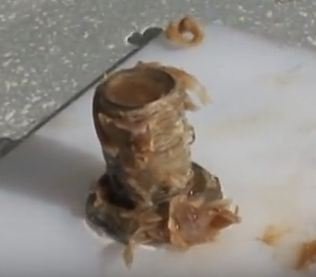danderer
Guru
One of the most meaningful comments I've seen in awhile appeared in another thread here:
I felt pretty comfortable with my current setup: 4 pumps with a total nominal capacity of 8500 GPH on a 40' boat.
However, when changing the depth transducer this week I realized a failure of even that single small fitting would overwhelm all my pumping capacity and sink the boat.
The math is pretty straightforward. Even assuming all 4 pumps work correctly my effective pump rate would probably be 4000-5000 GPH. The transducer fitting, a 2" hole located 2' below the waterline will admit about 6700 GPH.
Absent quickly acquiring more pumping capacity or stemming the flow, the boat is going to the bottom.
That is just an example, but my takeaway is the importance of the advice above: Be ready to deal with flooding situations by limiting the ingress of water--don't just expect to rely on your pumps.
The practical reality is to know enough damage control to greatly reduce the inflow to where it is more than manageable for the pumps.
I felt pretty comfortable with my current setup: 4 pumps with a total nominal capacity of 8500 GPH on a 40' boat.
However, when changing the depth transducer this week I realized a failure of even that single small fitting would overwhelm all my pumping capacity and sink the boat.
The math is pretty straightforward. Even assuming all 4 pumps work correctly my effective pump rate would probably be 4000-5000 GPH. The transducer fitting, a 2" hole located 2' below the waterline will admit about 6700 GPH.
Absent quickly acquiring more pumping capacity or stemming the flow, the boat is going to the bottom.
That is just an example, but my takeaway is the importance of the advice above: Be ready to deal with flooding situations by limiting the ingress of water--don't just expect to rely on your pumps.


